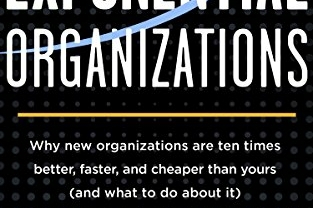In Digital Marketing Strategy: An Integrated Approach to Online Marketing, digital marketing strategist Simon Kingsnorth provides a guide to structuring and building a more strategic approach to digital marketing. The third edition includes updates on cookies, data privacy, covid-19, TikTok and much more.
Smart Marketing
Smart marketing is much less about shouting about your product and much more about your product and much more about taking customers on a journey.
Digital Challenge
Where a TV advert or press advertisement may have 30 seconds to get a point across, digital will often have 100 characters or less than one second.
Digitization vs Digital Transformation
Digitization
The transfer of something analogue to something digital. It is the transformation of a culture into more of a digital focus. Digital Transformation is not purely a technology journey but, more importantly, a mindset. It consists of these hallmark traits:
- A relentless, all-consuming focus on the end consumer and their needs, including actively co-creating solutions with those customers.
- An organization that does its best to go out of its way to pursue that customer focus (i.e. historical, cultural and structural standards).
- A ‘can do’, collaborative and flexible attitude to the customer and the work of serving customers (i.e. never accepting no for an answer).
- Agile and adaptable ways of working. A focus on value creation and breakthroughs, rather than the incrementalism of efficiencies (though this is not to say that efficiency is not important).
- A greater focus on getting to outcomes, rather than process, quickly (i.e. the company is more interested in customers and their needs than in itself).
- People and their ingenuity are prized. Technology is a smart enabler of the above.
A strategy without a plan is no more than an idea.
SEO rules for content
The secret to SEO is not to optimize for the search engines but for your audience and this applies to content as much as any other area.
Optimize for consumers not the search engines
SEO rules for content The secret to SEO is not to optimize for the search engines but for your audience and this applies to content as much as any other area.
Paid Search
It is the process of bidding for potential clicks on an advert you create that is displayed within the search results pages of most search engines.
Unlike traditional advertising, paid search is ‘bought’ via an auction model. For a given keyword or phrase an advertiser can place a maximum bid; the higher the bid, the higher the likelihood that the advert will be displayed in the top positions. However, one of the big attractions of paid search advertising is that the advertiser only pays each time the advert is clicked, not displayed.
Advanced Pay Search
Dayparting
Dayparting, or custom ad scheduling, allows you to control the days of the week and times of day that you want your ads to display, and also adjust the maximum bid levels based on these parameters.
Sitelink extensions
Site links allow you to present alternative links within your ad.
Call extensions
If you have the ability to take orders over the phone then adding your phone number to an ad is advised as it will drive up conversions. In most mobile devices a click-to-call button will be displayed.
Location extensions
Google is increasingly focused on providing hyper-local results. The growth of mobile browsing has made this easier as the location is straightforward to calculate.
Privacy Sandbox
‘Privacy Sandbox’ is a set of tools to try and replicate the benefits of third-party cookies whilst still ensuring privacy for the user. This includes audience- and interest-based targeting for example.
FLoC – Federated Learning of Cohorts.
This is the approach of putting users into groups of individuals with similar characteristics so those groups can be targeted without any specific information on the individual being retained or tracked.
Direct response prospecting
This is used to find users for a particular product or service and aid consumers on the path to conversion. This activity seeks to find users in highly relevant areas of the web and is really the most versatile use of display. Prospecting can actually be used as a proxy for awareness as it is showing adverts to new users; however, as there is often a CPA goal it is done in a more subtle way using more cost-effective formats – mainly banner creative.
Many businesses try to fit into the channel rather than fitting the channel to their business. This is a mistake.
Social Media gain from cookies retargeting
Where the changes to cookies will harm some forms of advertising such as remarketing, social media advertising may see a benefit. Social media advertising uses the logged-in state and profile data to enable its targeting and this does not require third-party cookies. This means that the opportunity to deliver targeted advertising to your audience remains strong on social media.
Influencer Marketing
There are three approaches to Influencer marketing and you should consider them all:
- Marketing through influencers, is the techniques of using influencers to promote your product to their dedicated base.
- Marketing to influencers, is the method of promoting your brand to influencers with the aim of raising awareness with influencers rather than with their followers.
- Marketing with influencers is turning influencers into advocates in order to gain better relationships with them and even potentially drive down your costs.
The 5 Ts of email marketing
- Targeting: Are you reaching the right people with this communication?
- Timing: Are you reaching them at the right time of day, week, in their relationship?
- Template: Is the design optimized?
- Testing: Are you learning? Are you reviewing the data?
- Tone: Is the content compelling?
Affiliate Marketing
Affiliate marketing is simply partnering with other business to provide your products to a wider audience in exchange for a fee or receiving a payment for promoting someone else’s products to your audience.
Content Marketing
Content Marketing strategies can be linked to the sales lifecycle and therefore typical objectives are to:
- Create awareness: increase visibility of the product service.
- Change perception: change views on the product service (for example following a product recall).
- Create engagement: increase interactions with the brand and website.
- Drive transactions: increase leads and conversions.
- Increase retention: improve loyalty and customer satisfaction.
Need help with developing a digital strategy for your business? Get in touch.


